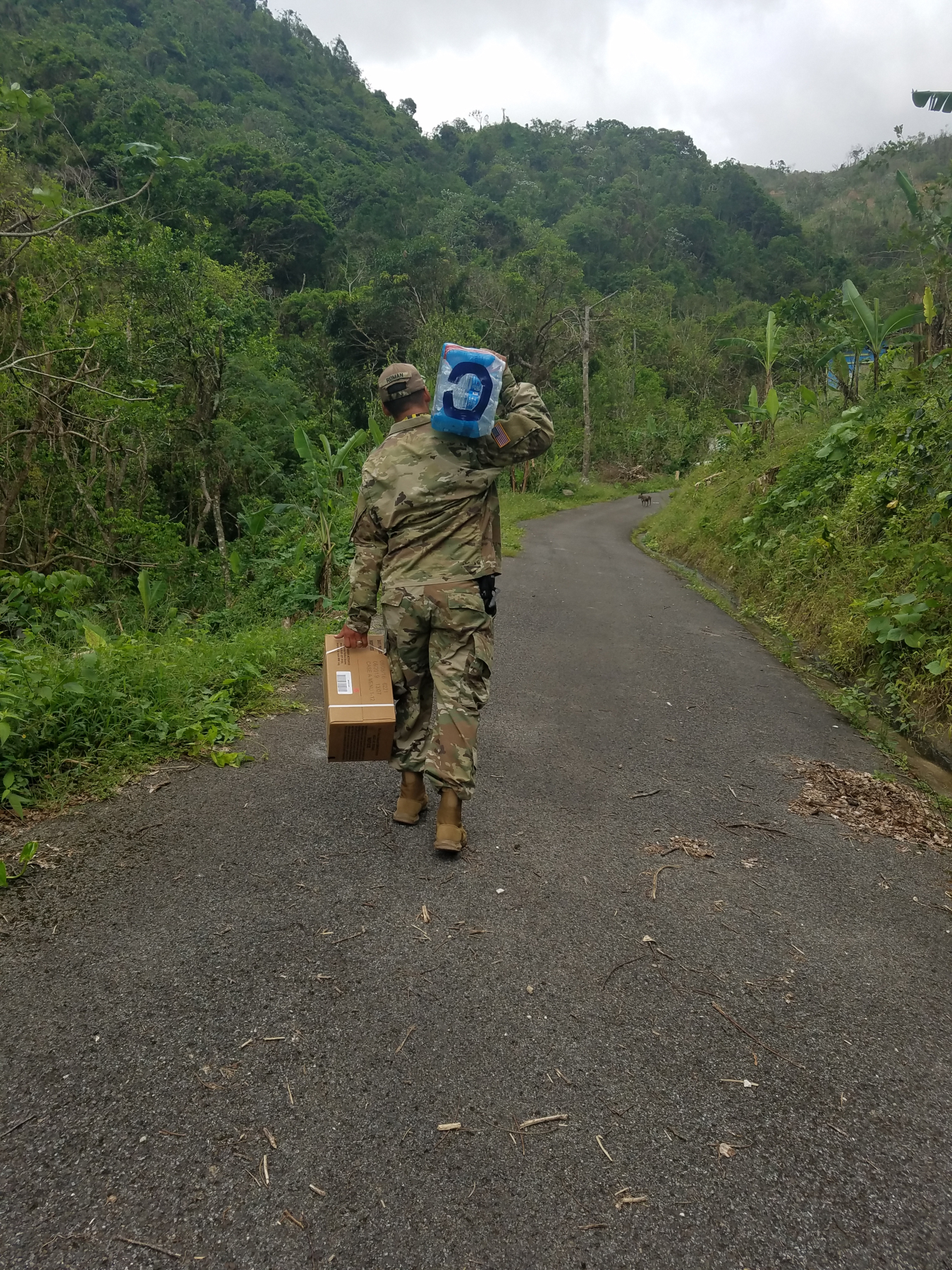When Virginia Castro returned from temporary assignment to Puerto Rico, she brought back memories and lessons that transformed her perspective.
Office of Energy Efficiency & Renewable Energy
January 17, 2018When Virginia Castro returned from temporary assignment to Puerto Rico, she brought back memories and lessons that transformed her perspective professionally and personally.
Last September, Hurricane Maria, a Category 5 storm, made a direct hit on the Commonwealth of Puerto Rico, resulting in unprecedented destruction. As part of the disaster response, the Federal Emergency Management Agency (FEMA) had requested support from bilingual personnel at DOE. Castro volunteered for a 30-day deployment as part of FEMA’s Intergovernmental Affairs Team to support recovery efforts on the island. As a project officer for DOE’s State Energy Program, in the Weatherization and Intergovernmental Programs Office, Castro helps advance state energy initiatives related to energy efficiency technologies and programs. Below she shares her experience.
What was most memorable about the Puerto Rico mission?
Puerto Rico Se Levanta – this mission has become an integral part of who I am today. The most memorable part is the people I worked with. While I do have family in Puerto Rico, I am not Boricua. My Spanish has different inflections and in Mexico we use different slang, but it did not matter. Amidst complete devastation and loss, anger and frustrations, fear and hopelessness, the communities were so strong and welcomed me into their lives and their homes. We ate together. We prayed together. We were one community: “somos solidarios.”

Can you describe a typical day of recovery work for you?
Officially, we worked six days per week, 12 hours a day, but unofficially we put in more hours than that to prepare for the next day or to process what had transpired earlier. We started the day with our morning briefing at 7 a.m. At this meeting, we learned pertinent information from FEMA operations related to our municipalities, and we coordinated with other teams on the field. For example, we might learn that there would be 3,500 boxes of groceries delivered on a certain day, and coordinate with our municipality to make sure they were prepared to receive and distribute. After the morning briefing, we would meet with either the mayor or deputy mayor, or municipal staff. We would check on the status of debris, roads, bridges, and talk to locals. We would organize medical clinics, town halls, and trainings for our communities.

What was the state of the power grid?
Overall, from latest situation reports (1/10/2018), 60.4% of electricity customers in Puerto Rico (890,427) have been restored and all 78 municipalities are at least partially energized. That said, it is important to note there is not one municipality that is 100% energized and that there are still communities without running drinking water. The destruction to the grid and the power system is unprecedented – downed power lines, transformers, thousands of miles of cables.
How did the language and cultural barrier manifest itself in recovery work?
Although Puerto Rico is a U.S. territory composed of U.S. citizens, not all residents on the island speak English. All of my meetings were conducted in Spanish. But speaking Spanish was no guarantee of success in communicating during recovery. For example, the enormity of information about aid programs for residents—coupled with limited or non-existent telecommunication—was overwhelming. Eligibility criteria and application procedures for government and non-government aid are voluminous and hard to process for people even in the best of circumstances. In the recovery effort, there is so much information circulating at any given time—it is like drinking from a firehose. Some residents in rural areas are unable to read, rendering written documents, even in Spanish, useless.
What was the most difficult aspect of the recovery work?
Letting go and understanding my limitations. For example, one of my favorite people I got to know was a 94-year-old gentleman from Medellin, Colombia. He used to be a navigator on American cargo ships, where he traveled the world. He lost everything in Hurricane Maria and has no family. This gentleman has been at an emergency shelter—an abandoned school—since Maria. He is delightful and uses very colorful language. He asked me one day, “What would you do if you were me? There is no more hope for someone my age.” I cannot fix this. I understand that the shelter administrators are locating senior housing for him, where he will spend the rest of his days in a strange place, among strange faces.

